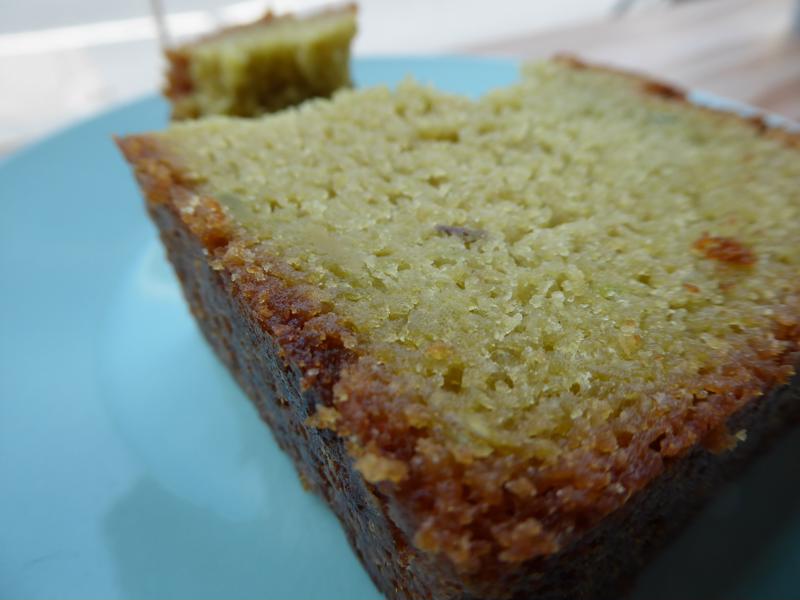The versatility of vegetables is an important lesson every Boulder culinary student will learn before graduation. The right vegetable can brighten up or balance an entree, or add a pop of color as a side.
Vegetables are also filled with natural sugars, making them excellent options for a dessert menu. Vegetable desserts are much loved by sneaky moms trying to get a helping of carrots into their children’s diets.
But veggies don’t have to hide to be appreciated by your customers. There are plenty of delicious desserts made with vegetables that shine not in spite of, but because of their vegetable components. Here are two:
Spiced parsnip cake
Parsnips might looked like carrot’s pale cousin, but they’re actually packed with flavor. This spiced cake recipe from Food52 calls for two large parsnips, which complemented by maple syrup and French four spice.
 This parsnip spiced cake recipe is a delicious take on a traditional carrot cake that incorporates maple syrup.
This parsnip spiced cake recipe is a delicious take on a traditional carrot cake that incorporates maple syrup.Begin by combining your dry ingredients: all-purpose flour, almond meal flour, unsweetened shredded coconut, baking powder, baking soda, French four spice (or white pepper, nutmeg, cloves and ginger), cinnamon, ginger and table salt.
Next, mix the wet ingredients: buttermilk at room temperature, maple syrup, castor sugar, four eggs at room temperature, vanilla extract and cooled, melted butter.
Add wet ingredients to the dry and stir until almost incorporated, then add the shredded parsnips. Bake at 325 degrees Fahrenheit in a greased 9-by-13-inch cake pan for 35 to 40 minutes.
While baking, make a maple syrup glaze: one part maple syrup, one part unsalted butter and two parts room temperature buttermilk. Heat the butter and maple syrup until the syrup begins to boil, cool for a few minutes, then whisk in the buttermilk.
When the cake is done, transfer it to a cooling rack and pierce the top with a fork a few times, then pour the glaze over top while the cake is still warm.
New classic red velvet cake
While most red velvet cakes made today are colored as such because of the addition of red food coloring, this indulgence once got its distinctive hue thanks to chemical reactions that took place after the ingredients were mixed. Traditionally, cocoa powder contained anthocyanins, which have a red tint when mixed with acids like the vinegar and buttermilk often used in the cake, according to Gizmodo.
Today, most cocoa powders are produced with an alkalizing agent that prevents the rose-tinted reaction. But that doesn’t mean your red velvet cake can’t be naturally red without the food coloring. This beet-based cake from Cooking Light proves it.
Begin by boiling one beet cut into wedges in a small saucepan with just enough water to cover the top. Cook until tender, then drain and let cool. Finely chop the beet in a food processor and measure out 1 cup (that’s all you’ll need – set the rest aside).
Combine the beet, buttermilk and vanilla in the food processor until smooth. In a separate bowl, whisk together flour, cocoa, baking powder and salt. Next, mix the wet ingredients: sugar, softened butter, oil, 2 eggs and 1 egg white. Beat until incorporated. Alternate adding the beet mixture and the flour mixture to the wet ingredients.
Bake at 325 degrees Fahrenheit in three greased 8-inch round cake pans for 23 to 24 minutes. While baking, prepare the filling and frosting. For the filling, beat together cream cheese, Greek yogurt, vanilla and salt until smooth, then add powdered sugar.
For the frosting, combine sugar, 4 egg whites, cream of tartar and a dash of salt in a double boiler. Cook over simmering water, stirring constantly with a whisk, until the mixture reaches 160 degrees Fahrenheit. Remove from heat and beat until stiff peaks form.
When the cake is done, remove and let cool. Spread the filling between the layers, then coat the top and sides with the meringue frosting.


